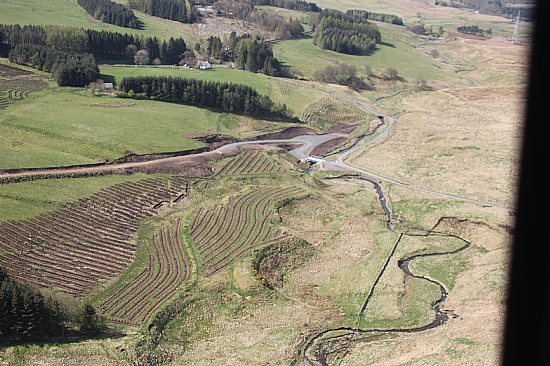Woodland Planting and Natural Flood Management
Carried out by: Heriot Watt University
Summary Description:

Woodland expansion is a key objective of the Scottish Government, strategic to mitigating climate change, stimulating economic development and supporting sustainable flood management. This case study based project therefore aims to quantify the contribution of large-scale (up to 50% catchment area) woodland planting for Natural Flood Management (NFM) purpose. Field monitoring of runoff and sediment delivery will be analysed for different cultivation areas (ploughing, excavator mounding, hand mounding, rotary mounding, screefing). Complementary data will also determine the effectiveness of good practice controls (e.g. restricting furrow length/depth; vegetation filter strips; silt traps). Numerical hydraulic models will then appraise how flood risk is altered by planting techniques and controls, including future scenarios for woodland maturation. Outcomes intend to influence the planned Forestry Commission’s ‘Practice Guide’ and SEPA’s ‘NFM Handbook’ on managing forestry for flood risk benefit. Collaboration includes Heriot-Watt University, Tillhill Forestry, Forest Research, Clackmannanshire Council, JBA Consulting and SEPA.
Timescale: 2015-2019
SFT Funds Awarded: £15,250
Project Outcomes:
This research aimed to assess the short-term consequences of a large scale woodland planting project. Analyses of sixteen rainfall events suggest that pre-planting site cultivation can have a significant effect on surface runoff. More work is needed to analyse differences between cultivation treatments and understand how these affect pathways of water movement and downstream flood risk. It will also be interesting to look at how cultivation effects on runoff change through time and interact with the increasing influence of the growing woodland crop. Future analyses will investigate the relationships between hydrological processes and the catchment response.
